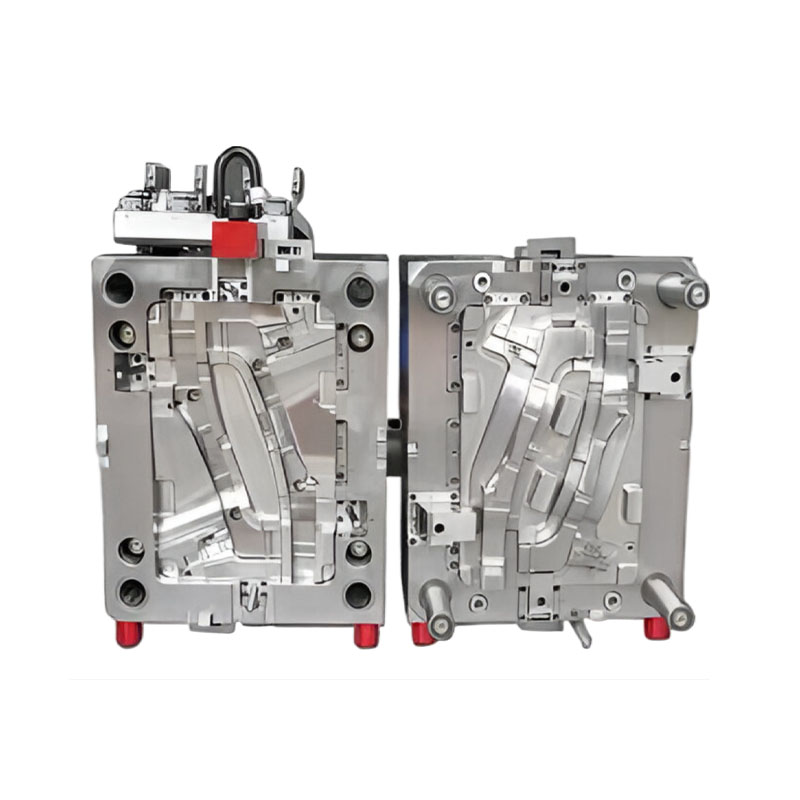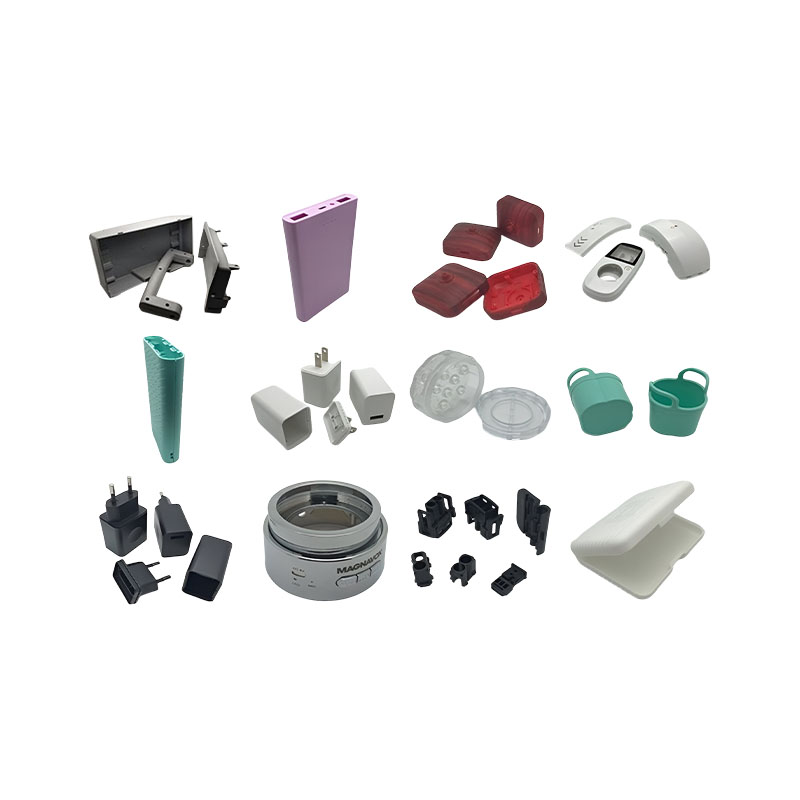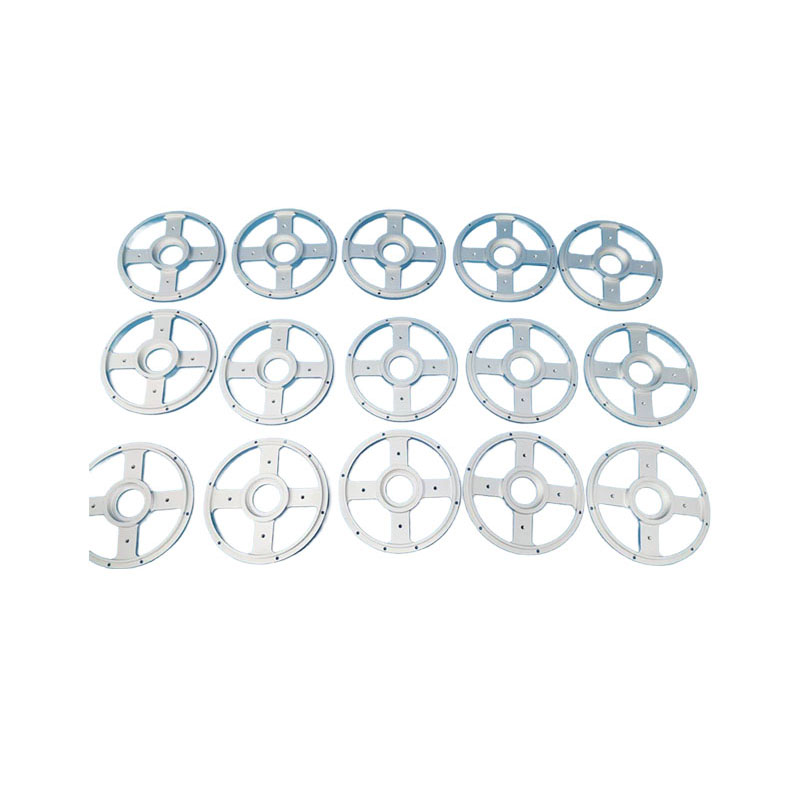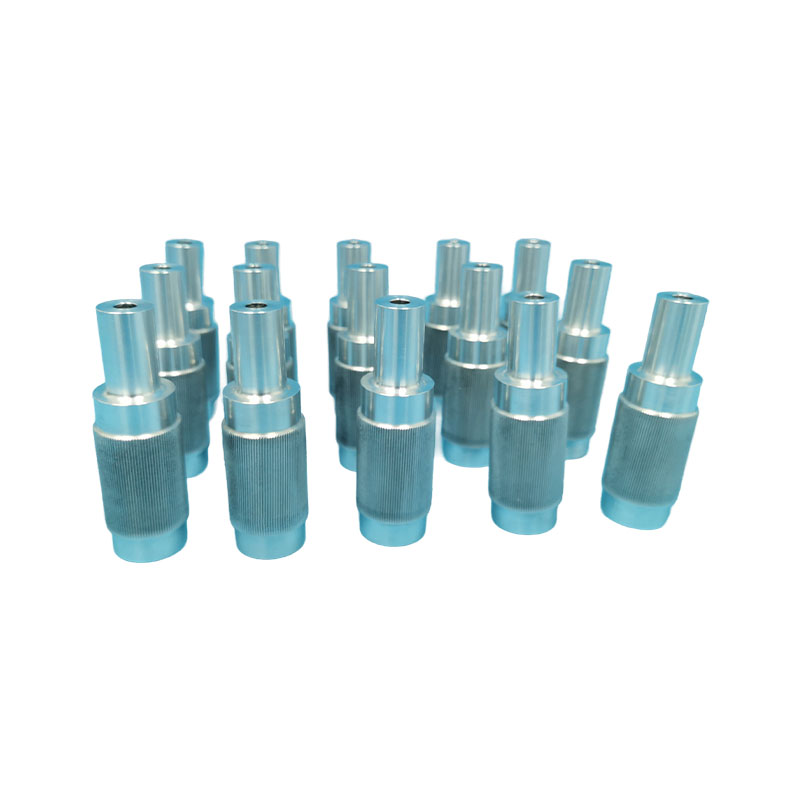How to effectively suppress the phenomenon of aluminum material sticking to the knife during aluminum CNC turning?
Release Time : 2025-10-10
In aluminum CNC turning, tool sticking is a common problem that hinders process stability and surface quality. Aluminum alloys inherently have good ductility and relatively low hardness. During high-speed cutting, chips soften and undergo plastic flow. When the cutting temperature rises above a certain range, aluminum chips adhere to the tool rake face, forming a hard layer of built-up edge (BUE). This layer not only alters the tool geometry, affecting cutting angles and feed accuracy, but also removes tool coatings and even substrate material during detachment, accelerating tool wear. More seriously, repeated BUE formation and detachment can leave scratches, burrs, or irregular protrusions on the workpiece surface, leading to dimensional deviations, excessive roughness, and even preventing uniform adhesion during subsequent surface treatments such as anodizing or painting. Therefore, effectively preventing aluminum material sticking is crucial to ensuring machining quality, improving efficiency, and extending tool life.
The primary measure to prevent tool sticking lies in tool selection and optimization. Specialized aluminum cutting tools typically utilize high-cobalt high-speed steel or fine-grained carbide as their base, offering enhanced red hardness and wear resistance. More importantly, their rake faces are precision-polished to a mirror-like finish, significantly reducing the friction coefficient between the aluminum chips and the tool, allowing the chips to glide smoothly and minimizing the chance of sticking. Some high-end cutting tools also utilize specialized coatings such as diamond-like carbon (DLC) or titanium aluminum nitride (AlTiN). These coatings are not only highly hard and heat-resistant, but also chemically inert and less reactive with aluminum, effectively preventing the formation of sticking. Tool geometry is also specifically designed, typically with a large rake angle and sharp cutting edges, to reduce cutting forces and heat, preventing material "welding" to the tool tip due to compression.
Properly setting cutting parameters is also crucial. Excessively low cutting speeds keep the cutting process within the medium temperature range, precisely where built-up edge is most likely to form. Excessively high speeds, on the other hand, can induce intense heating, further softening the aluminum. Therefore, selecting an appropriate linear speed to quickly move the cutting process past the built-up edge zone and into a high-temperature, stable cutting state is an effective strategy to avoid this problem. Furthermore, a higher feed rate and depth of cut help form thick, continuous chips, reducing the chance of thin chips accumulating in front of the tool. Intermittent cutting or very shallow depths of cut are often more likely to cause tool sticking and should be avoided as much as possible.
Cooling and lubrication methods have a direct impact on preventing tool sticking. Aluminum alloys are sensitive to elements such as chlorine and sulfur. Using cutting fluids containing chlorine or sulfur may cause corrosion or surface spotting. Therefore, a dedicated aluminum emulsion or semi-synthetic cutting fluid with excellent lubricity, permeability, and oxidation resistance should be selected. A sufficient supply of coolant not only effectively dissipates cutting heat and reduces tool and workpiece temperatures, but also forms a lubricating film on the tool surface, reducing direct metal-to-metal contact and preventing sticking. For machining requiring high precision or surface finishes, minimum quantity lubrication (MQL) can also be employed. This technique uses a nozzle to precisely spray a very small amount of high-efficiency lubricant onto the cutting zone, ensuring lubrication while minimizing oil mist and environmental pollution.
Prompt chip removal is also crucial for preventing secondary sticking. Long, stranded chips entangled in the tool or workpiece not only impede heat dissipation but can also push hot aluminum chips back into the cutting zone, exacerbating the risk of tool sticking. Optimizing the tool's chipbreaker design or adjusting cutting parameters to break the chips into smaller particles helps them escape the machining area quickly. The machine tool's chip removal system should be kept unobstructed to prevent chip accumulation and backflow.
Workpiece clamping stability is also crucial. Vibration can cause micro-impacts between the tool and the workpiece, disrupting cutting continuity and increasing the risk of sticking. Therefore, the fixture should ensure a secure hold on the workpiece to reduce chatter during machining. For thin-walled or slender parts, auxiliary supports or vibration damping devices can be used to improve overall rigidity.
Finally, regular tool inspection and maintenance are effective ways to prevent the worsening of tool sticking. If even a small amount of chip buildup is detected on the tool surface, it should be promptly replaced or reground to avoid a vicious cycle. Maintaining tool sharpness is the most direct way to prevent tool sticking.
In summary, preventing tool sticking during aluminum CNC turning requires coordinated optimization of multiple aspects, including tool material, geometry, cutting parameters, cooling and lubrication, and process system stability. This requires not only meticulous control of technical details but also a deep understanding of material properties and machining mechanisms. Only by achieving precise matching of every step can efficient, stable, and high-quality continuous machining of aluminum products be achieved, providing a solid foundation for precision manufacturing.
The primary measure to prevent tool sticking lies in tool selection and optimization. Specialized aluminum cutting tools typically utilize high-cobalt high-speed steel or fine-grained carbide as their base, offering enhanced red hardness and wear resistance. More importantly, their rake faces are precision-polished to a mirror-like finish, significantly reducing the friction coefficient between the aluminum chips and the tool, allowing the chips to glide smoothly and minimizing the chance of sticking. Some high-end cutting tools also utilize specialized coatings such as diamond-like carbon (DLC) or titanium aluminum nitride (AlTiN). These coatings are not only highly hard and heat-resistant, but also chemically inert and less reactive with aluminum, effectively preventing the formation of sticking. Tool geometry is also specifically designed, typically with a large rake angle and sharp cutting edges, to reduce cutting forces and heat, preventing material "welding" to the tool tip due to compression.
Properly setting cutting parameters is also crucial. Excessively low cutting speeds keep the cutting process within the medium temperature range, precisely where built-up edge is most likely to form. Excessively high speeds, on the other hand, can induce intense heating, further softening the aluminum. Therefore, selecting an appropriate linear speed to quickly move the cutting process past the built-up edge zone and into a high-temperature, stable cutting state is an effective strategy to avoid this problem. Furthermore, a higher feed rate and depth of cut help form thick, continuous chips, reducing the chance of thin chips accumulating in front of the tool. Intermittent cutting or very shallow depths of cut are often more likely to cause tool sticking and should be avoided as much as possible.
Cooling and lubrication methods have a direct impact on preventing tool sticking. Aluminum alloys are sensitive to elements such as chlorine and sulfur. Using cutting fluids containing chlorine or sulfur may cause corrosion or surface spotting. Therefore, a dedicated aluminum emulsion or semi-synthetic cutting fluid with excellent lubricity, permeability, and oxidation resistance should be selected. A sufficient supply of coolant not only effectively dissipates cutting heat and reduces tool and workpiece temperatures, but also forms a lubricating film on the tool surface, reducing direct metal-to-metal contact and preventing sticking. For machining requiring high precision or surface finishes, minimum quantity lubrication (MQL) can also be employed. This technique uses a nozzle to precisely spray a very small amount of high-efficiency lubricant onto the cutting zone, ensuring lubrication while minimizing oil mist and environmental pollution.
Prompt chip removal is also crucial for preventing secondary sticking. Long, stranded chips entangled in the tool or workpiece not only impede heat dissipation but can also push hot aluminum chips back into the cutting zone, exacerbating the risk of tool sticking. Optimizing the tool's chipbreaker design or adjusting cutting parameters to break the chips into smaller particles helps them escape the machining area quickly. The machine tool's chip removal system should be kept unobstructed to prevent chip accumulation and backflow.
Workpiece clamping stability is also crucial. Vibration can cause micro-impacts between the tool and the workpiece, disrupting cutting continuity and increasing the risk of sticking. Therefore, the fixture should ensure a secure hold on the workpiece to reduce chatter during machining. For thin-walled or slender parts, auxiliary supports or vibration damping devices can be used to improve overall rigidity.
Finally, regular tool inspection and maintenance are effective ways to prevent the worsening of tool sticking. If even a small amount of chip buildup is detected on the tool surface, it should be promptly replaced or reground to avoid a vicious cycle. Maintaining tool sharpness is the most direct way to prevent tool sticking.
In summary, preventing tool sticking during aluminum CNC turning requires coordinated optimization of multiple aspects, including tool material, geometry, cutting parameters, cooling and lubrication, and process system stability. This requires not only meticulous control of technical details but also a deep understanding of material properties and machining mechanisms. Only by achieving precise matching of every step can efficient, stable, and high-quality continuous machining of aluminum products be achieved, providing a solid foundation for precision manufacturing.







